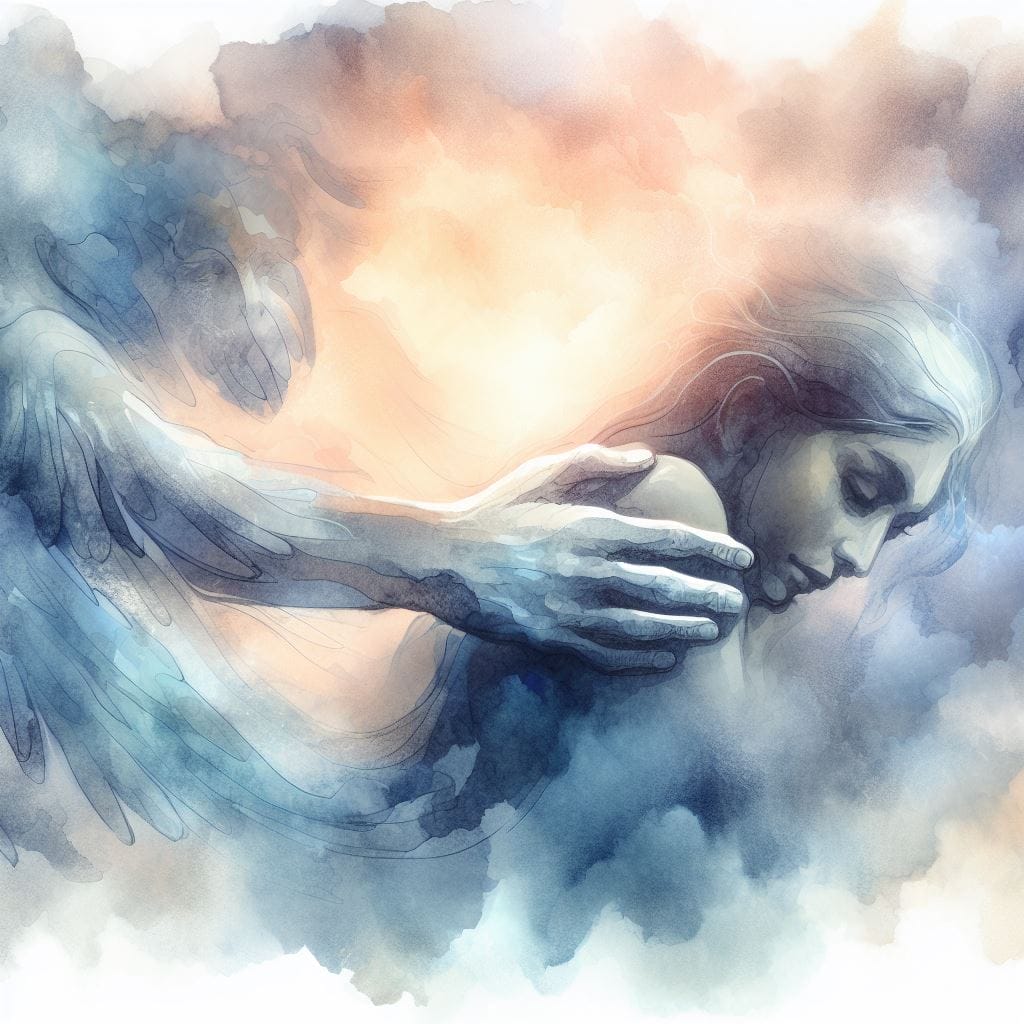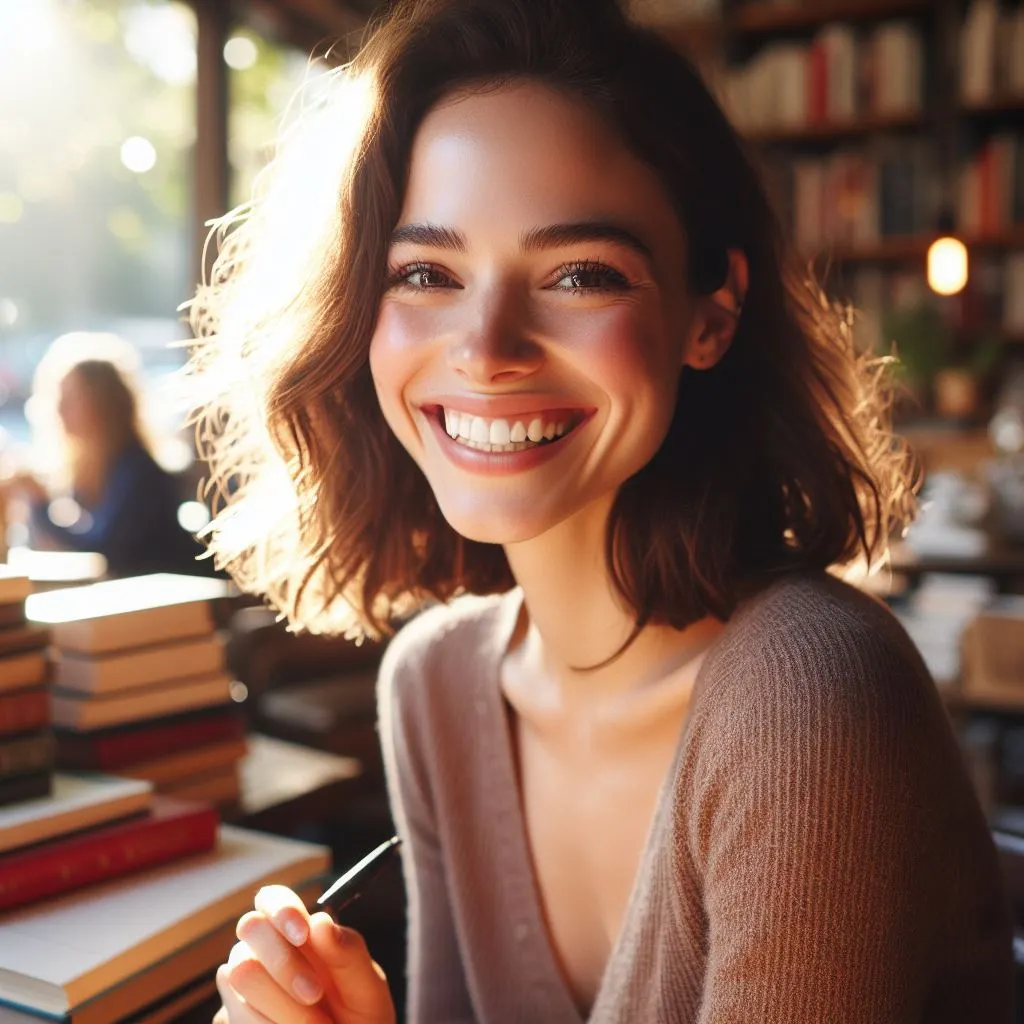Introduction
In the intricate dance of human emotions, two terms often arise: empathy and sympathy. Do you sometimes wonder whether one can say “empathy” instead of “sympathy” or vice versa? Picture this: As much as you are in an isolated room with another person struggling. In such a case, as they relate their stories, you may experience mixed feelings of pity and trying out the emotion of empathy.
Empathy and sympathy are two standards intently related, yet rather exclusive. The difference between sympathy and empathy goes beyond semantics; it’s about information about any other man or woman’s emotions at a deeper stage.
Empathy, as Brené Brown, the renowned professional on vulnerability and compassion, puts it, “includes feeling with humans.” It’s like stepping into someone else’s shoes, feeling some other person’s feelings as if they were your personal. A sympathetic response in an international inclined closer to literary alchemy could appear something like this: I understand the trials you’re dealing with proper now, and I am here to assist you regardless of what.
Conversely, compassion is the feeling of remorse for another individual. When you expand sympathy, you will know another man or woman’s misfortune and explicit your condolences. Saying “I make an apology for your sadness” or “I express regret which you’re experiencing this” is comparable to this.
Knowing the distinction between those concepts is essential as it has the energy to improve or worsen your relationships with different people. While empathy involves feeling, sympathy is often more surface-level. In simple terms, it is feeling on a first-person basis as compared to somebody else’s feelings.
Why then and why does this make a difference Learning to differentiate between empathy and compassion might change how you relate with people in a personal capacity as well as in your profession. It’s about being emotionally intelligent and forging a deeper connection with others.
In this exploration of empathy and sympathy, we’ll delve into the differences, the realistic applications, and why it’s vital to practice empathy, not just feel sympathy. We’ll withstand the urge to merely experience awful for someone and alternatively be cognizant of know-how and sharing their feelings.
Come along in this journey as we discover the diffused variations among empathy and sympathy and how having a compassionate and sympathetic response may additionally assist you in genuinely connecting with people.
Key Takeaways
After studying this comprehensive exploration of empathy vs. Sympathy, you’ll stroll away with deeper information about those concepts and their actual global packages. Here are the important thing takeaways to increase your attitude:
- The Crucial Distinction: You’ll grasp the crucial difference between empathy and sympathy. Empathy includes feeling with a person, whilst sympathy is feeling sorry for them. Recognizing this difference can enhance your interactions with others.
- Empathy vs. Sympathy in Practice: You’ll discover ways to follow these concepts for your everyday existence. Understanding whether to provide empathy and whether sympathy is greater suitable is a treasured skill for constructing more potent relationships.
- Cultivating Empathy: We’ll offer realistic steerage on how to expand and exercise empathy. You’ll discover empathy-constructing sporting activities and strategies, that assist you triumph over boundaries and join more deeply with the ones around you.
- Personal Growth: Recognizing the difference between empathy and sympathy can lead to personal increase. By information and sharing the emotions of others, you’ll decorate your self-consciousness and emotional intelligence, fostering significant connections.
- Empathy in Professional Life: You’ll see the relevance of empathy and sympathy inside the administrative center. These characteristics can positively impact leadership, group dynamics, and customer service, developing a greater compassionate and productive professional environment.
- Real-Life Application: We’ll share real-life examples and case research that exhibit the strength of empathy and the potential pitfalls of sympathy. Learning from these studies will help you navigate emotional conditions with grace and expertise.
- The Deeper Connection: By practicing empathy rather than simply feeling sympathy, you’ll forge a deeper reference to others. In difficult circumstances, this emotional connection may bring comfort, support, and peace.
- Enhanced Relationships: Your increased capacity for empathy will result in deeper, more meaningful bonds in both personal and professional interactions. You’ll discover the joy of genuinely understanding and sharing in the emotions of others.
- The Call to Action: You’ll be inspired to put the lessons of compassion and empathy into practice as you end this journey’s last chapter. Your gift to the world will be your capacity to relate to, comfort, and connect with people.

Empathy Explored
A. What is Empathy?
Empathy is the cornerstone of human compassion. It’s the ability to understand and percentage the feelings of some other. In simple terms, empathy approaches stepping into someone else’s shoes and seeing the sector through their eyes. Here, we’ll damage down the essence of empathy and its various bureaucracies.
- Definition: Fundamentally, empathy functions as an emotional conduit, building a deep connection between us and the complexities of others’ feelings. It serves as a mirror, reflecting the wide range of feelings and ideas that others we encounter with have.
- Empathy Types: Empathy is a diamond with many facets. It can be cognitive, where we intellectually understand someone’s feelings. It can be emotional, where we genuinely share their emotions, and it can be compassionate, where we’re moved to help or support them.
B. Empathy in Practice
Empathy is not a concept limited to textbooks; it’s a real force that shapes our relationships and interactions.
- Real-life examples: Imagine a friend who, after a difficult day at paintings, listens to your frustrations with the actual hobby. That’s an empathetic reaction, a second while a person truly connects with your feelings.
- Benefits of Empathy: The capacity for empathy to create connections is what gives it power. It helps us feel less alone in our challenges and cultivates understanding and trust.
C. Empathy in Psychology
Empathy has a domestic in the human brain and performs a pivotal position in our mental panorama.
- Empathy in the brain: Researchers have discovered that empathy lights up precise areas in our brains. It’s as if our neurons dance to the track of compassion, forging connections with others.
- Empathy problems: While empathy is a not unusual trait, a few individuals may find it tougher due to situations like autism or psychopathy. Understanding these variations is vital for a compassionate society.
D. Examples of Empathy:
- Listening to a friend who’s going through a hard breakup and feeling their unhappiness and heartbreak.
- Acknowledging and imparting resources to a coworker who is experiencing strain at work demonstrates empathy and aid.
- Providing secure surroundings for a member of the family to vent their feelings and take part in their sorrow might help comfort a person who has lost a loved one.
Sympathy Explored
A. What is Sympathy?
Now, allow’s shift our cognizance to sympathy. Sympathy is often used together with empathy, however, it’s now not quite equal.
- Definition: Sympathy is when we understand a person’s struggle and explicitly our problem. It’s like extending a comforting hand to a person with aches.
- Emotional distance: The key difference is that while empathy immerses us in some other’s emotions, sympathy acknowledges their emotions without fully sharing the revel.
B. Sympathy in Practice
Sympathy often manifests as gestures of kindness and support.
- Sympathy as a gesture: Sympathetic gestures include lending a sympathetic ear, sending a “get well soon” card, or expressing regret for the loss experienced.
- Limitations of sympathy: Even with great intentions, sympathy can once in a while lead to a sense of alienation. It would possibly experience such as you’re on the outside searching in, unable to virtually recognize every other individual’s world.
C. Sympathy in Society
Being sympathetic is not a universal concept. It varies throughout cultures and evolves over the years.
- Cultural components: Different society’s specific sympathy in unique approaches. What’s considered sympathetic in one tradition may not be the same in every other.
- Historical context: Throughout history, the idea of compassion has changed as a result of numerous social, nonsecular, and philosophical traits. Comprehending this progression may elucidate its importance in contemporary culture.
D. Examples of Sympathy:
- Feeling sorry for a neighbor who just got laid off but not truly being able to grasp the full impact of their situation.
- Offering condolences to a friend who failed an important exam without fully comprehending the disappointment and frustration they are experiencing.
- Expressing support to a colleague who lost a pet by acknowledging their sadness, but not truly feeling the depth of their grief.

Key Difference between Empathy vs Sympathy
A. Sympathy vs empathy Chart
In our adventure to discover the subtle however vital distinctions between empathy and sympathy, we’ll start by growing a visible chart that lays out these differences facet through aspects. Let’s dive into the heart of information feelings.
When it comes to forming emotional connections with others, it’s essential to distinguish between empathy and sympathy. These two phrases are regularly employed interchangeably, yet they own particular features that can profoundly affect our interpersonal engagements.
Table No 1:
| Aspect | Empathy | Sympathy |
|---|---|---|
| Definition | The ability to understand and share the feelings of another. | Feelings of pity and sorrow for a person else’s misfortune. |
| Emotional Response | Sympathy involves spotting some other person’s emotions without feeling them yourself. | Empathy entails experiencing the opposite person’s feelings. |
| Level of Involvement | Empathy requires deeper information and an extra personal connection. | Sympathy involves a feeling of caring but maintains an emotional distance. |
| Example | When you empathize with someone, you’re walking in their shoes, feeling their joy or pain. | Offering condolences or announcing, “I’m sorry to hear that” is a sympathetic reaction. |
| Usage | Empathy is about connecting on a profound level and providing emotional support. | Sympathy is more approximately acknowledging someone’s emotions and expressing condolences. |
| Use of “I” Statements | “I understand how you feel.” | “I apologize for your loss.” |
Table No 2:
Now that we’ve laid out those differences, let’s explore whether it’s fine to apply empathy or sympathy.
| Aspect | Sympathy | Empathy |
|---|---|---|
| Ability to Feel | ✓ | ✓ |
| Emotional Intelligence | ✗ | ✓ |
| Understanding | ✗ | ✓ |
| Feeling Sorry | ✓ | ✗ |
| Interchangeable | ✓ | ✗ |
B. Utilizing Sympathy or Empathy?
Understanding while to use empathy or sympathy can be a game-changer for your interactions with others. Here, we offer guidance on the practical scenarios where each is more appropriate.
- In Times of Grief and Loss: When a person is going through a hard time, empathy is the important thing. It involves without a doubt expertise their pain, offering a listening ear, and being there for them.
- Celebrating Success: Empathy comes into play when you want to proportion in a person’s happiness. Celebrating their achievements as if they were yours fosters a deeper connection.
- Consoling During Hardships: Sympathy, on the other hand, is suitable for moments of misfortune. Offering sympathy means you well know their struggle and specifically your guide without always sharing their emotions.
- Crisis Situations: In emergencies, empathy can be helpful. Understanding someone’s fear and strain can assist in providing consolation and reassurance.
- Everyday Challenges: For regular troubles, a sympathetic reaction, which includes saying “I’m sorry to pay attention to that,” may be more fitting and respectful of personal limitations.
By understanding how to apply empathy or sympathy, you can navigate various social conditions with grace and emotional intelligence. Now, permit’s venture into the exciting grey place wherein those emotions now and again intermingle.
The Grey Area
A. The Interplay
Life is rarely black and white, and feelings often blur the strains between empathy and sympathy. In the complex global of human interactions, there are moments of overlap where empathy and sympathy blend.
- Supporting a Friend Through a Breakup: This situation can be a perfect blend of both. You empathize with your pal’s heartbreak, feeling their ache, at the same time as additionally supplying sympathy and phrases of comfort.
- Workplace Challenges: In an expert setting, acknowledging a colleague’s warfare with a sympathetic “I’m sorry you’re going through this” shows care, even though you couldn’t empathize with their state of affairs.
- Comforting a Stranger: When encountering a person in misery, you may not percentage their stories, however presenting sympathy by announcing, “I’m here for you” could make a substantial distinction.
B. Intelligence in Emotions
Emotional intelligence plays a pivotal function in how we respond to others’ emotions. It’s the capability to understand, apprehend, and manipulate feelings efficiently. The better your emotional intelligence, the better equipped you are to navigate the difficult dance between empathy and sympathy.
- Recognizing Emotions: Emotionally wise people can effortlessly pick up on the feelings of others, making it easier to determine whether or not to empathize or sympathize.
- Effective Communication: Understanding when to offer empathy or sympathy demonstrates emotional intelligence and strengthens your ability to guide others.

Why It Matters: Empathy and Sympathy
The simple components of empathy and compassion are from time to time lost inside the commotion of our normal lives in nowadays’s rapid-paced, increasing number of automated environments.
Comprehending the variations between those thoughts isn’t always the most effective in a cerebral enterprise; it carries significant consequences for individual development, interpersonal connections, and professional success.
A. Personal Growth
1. Self-awareness: The Influence of Compassion and Understanding
Empathy versus Sympathy:
Let’s start with the aid of demystifying the age-vintage question: what is the distinction between sympathy and empathy? Sympathy is when you grieve for a person, supplying them with your sympathy card and announcing, “I’m sorry for your loss.”
It’s the feeling of feeling sorry for any other individual once they’re suffering. Empathy, then again, goes past feeling sorry. It’s about expertise in the pain someone is going through, getting into their shoes, and saying, “I understand the way you sense.”
Embracing these concepts can substantially enhance personal growth. We open ourselves up to a profound sympathetic connection with others when we practice empathy and sympathy. We acquire insight into a person else’s feelings and experiences employing placing ourselves in their shoes, assisting us to grow to be higher variations of ourselves.
Empathy as a Personal Development Catalyst:
- The ability to apprehend a person’s feelings and experiences is a stepping stone to self-consciousness.
- Empathy exercises promote introspection and personal growth.
- It encourages emotional intelligence and personal development by creating a sense of connectivity.
2. Building Better Relationships: The Impact on Interpersonal Connections
Empathy and sympathy are the bedrock of constructing better relationships. When you take some time to recognize another individual’s ache and offer your guide, you’re creating a sturdy basis for interpersonal connections.
Accepting Empathy in Social Contexts:
- Empathy fosters trust and intimacy in relationships.
- It allows you to navigate conflicts with sensitivity and understanding.
- Deepening connections and emotional bonds with others becomes natural when you practice empathy.
B. Empathy and Sympathy in Professional Life
1. Workplace Dynamics: The Relevance in a Professional Setting
Sympathy and empathy are not only qualities in the corporate world; they are necessary instruments for success. Your process may be drastically impacted by using your ability to narrate the feelings and difficulties of your clients and coworkers.
In the Workplace, Empathy:
- It leads to better teamwork and collaboration.
- Empathetic leaders are more adept at conflict resolution.
- Employee delight and retention are better in empathetic painting environments.
2. Leadership and Management: How These Qualities Affect Leadership
Leadership and management require a sensitive stability of empathy and sympathy. Empathetic leaders can encourage and inspire their teams extra correctly.
Empathy’s Effect on Leadership:
- Empathetic leaders are better at knowing the wishes of their group contributors.
- They can encourage acceptance as true and loyalty among their fans.
- Empathy in leadership promotes a superb painting lifestyle.
Firsthand Knowledge of Sympathy and Empathy
In my journey to understand the profound variations among empathy and sympathy, I’ve come to understand the significance of those two seemingly interchangeable terms. Even though both sympathy and empathy include being aware of others’ feelings, my studies have introduced me to the specific results that each can also have on interpersonal relationships and human connection.
To me, empathy is the capability to completely enjoy any other person’s emotions. It’s like putting yourself in their role and experiencing their emotions. This close, often unsaid intimacy forges a connection that is beyond language. It seems like they’re pronouncing, “I understand your ache, and I’m proper here with you,” while a person surely empathizes with me. It’s an effective supply of consolation and guidance, especially at some point in difficult times.
However, in my view, sympathy is a greater cursory manifestation of compassion. It’s the act of acknowledging someone’s misfortune and presenting words of comfort. While sympathy is undeniably kind and considerate, it doesn’t convey the same weight of shared feelings that empathy does. It’s like pronouncing, “I’m sorry for your loss” or “I’m right here for you,” which, even though properly intentioned, doesn’t fully bridge the emotional gap.
I’ve found out that recognizing the difference between empathy and sympathy is important in building more potent, extra-meaningful relationships. It’s approximately responding to the feelings of others with depth and authenticity. My journey has also shown me the practical applications of these concepts in various aspects of life, from personal relationships to professional interactions.
By actively cultivating empathy and know-how whilst rent it versus sympathy, I’ve witnessed the fantastic impact it could have on my relationships. It’s allowed me to connect more deeply with buddies, my own family, and associates, fostering surroundings of agreement with and aid.
Moreover, the enjoyment has enlightened me about the wider societal implications of empathy and sympathy. The world can be a better place when we practice empathy over mere sympathy, promoting a compassionate and empathetic society.
This idea has enormous implications for group dynamics, corporate dynamics, community dynamics, and even global dynamics. It transcends individual interactions considerably.
In my experiences, however, it shows me that compassion and empathy are not mere platitudes nor doctrines that only exist on paper. This goes a long way in helping in mutual support, ensuring proper understanding of the relationship, as well as maintaining it.
Through empathy, it means to practice and live with the spirit of empathy, which enables us to make positive changes in the lives of those surrounding us and create a kinder world together. This excursion makes me grateful for its contribution to changing my thoughts about communication and the importance of humanity.
Actual Case Studies
Here are a few instances from my personal life that demonstrate the value of empathy and sympathy:
Example 1: How You Can Help a Friend by Using Empathy
A few years ago, certainly one of my nice pals went via an incredibly tough length. She turned grieving deeply seeing that her father had these days passed away. In this situation, I knew that offering mere sympathy wouldn’t be enough.
I chose to respond with empathy. I sat with her, listening without judgment and letting her express herself. I tried my hardest to grasp what she was going through, even though I couldn’t entirely appreciate her anguish. This kind reaction made her feel less alone in her sadness.
It wasn’t about saying the right words; it was about being there for her and sharing her emotions. Over time, our friendship deepened, and she felt the support and understanding that empathy provides.

Example 2: Sympathy in Professional Settings
In a professional context, I’ve witnessed situations in which sympathy, though nicely-intentioned, fell short of what became truly needed. A colleague changed into going through a difficult time at work, dealing with a mainly hard venture with a decent closing date. Others inside the group expressed sympathy, pronouncing such things as “I’m sorry you have to deal with this.
However, this expression of sympathy didn’t alleviate the stress my colleague was experiencing. What was needed in this scenario was an empathetic response—a recognition of the challenges and a genuine effort to help.
Instead of merely feeling sorry for the situation, we may have shown genuine support by acknowledging the burden and providing aid.
These real-world examples have shown me that compassion and empathy are not just for interpersonal relationships—they also work in professional contexts. Making a perfect choice may additionally have a huge influence on the connections and nicely-being of those around us, whether or no longer it’s expressing sorrow or presenting empathic expertise.
FAQs: What Are the Differences Between Empathy and Sympathy?
How does training empathy contribute to being a more compassionate and empathetic character, and what is the emotional intelligence in the back of expertise the difference between empathy and sympathy?
The ability to narrate to humans on a private stage through comprehending their feelings is referred to as empathy. It involves being privy to the alternative man or woman’s emotions and expressing sincere concern for his or her welfare. Being sympathetic is more than just expressing compassion or saying “I’m sorry for a person.” It is essential to building lasting connections.
Within this process, emotional intelligence is crucial. It’s the ability to recognize the distinction between compassion and empathy. Even though both phrases are frequently used synonymously, emotional intelligence clarifies the differences.
While compassion is only feeling sad for someone, empathy is a deeper comprehension of another person’s feelings. We may improve our empathy and compassion by developing our emotional intelligence, which will provide a sincere feeling of connection to our encounters.
Can you explain the cognitive empathy concerned in distinguishing between sympathy and empathy, and how can one end up more empathetic in their interactions?
Cognitive empathy is the capability to relate to every other person’s emotions employing know-how of what they are announcing and going through from a non-public revel in. It entails understanding the distinction between compassion and empathy. A basic “I’m sorry” is more superficial than empathy, which includes comprehending the feelings and wishes of the alternative character.
By intentionally being attentive to others and trying to location ourselves in their footwear, we may additionally practice cognitive empathy and emerge as more compassionate in our relationships.
We may provide more meaningful assistance, establish deeper connections with people, and forge stronger, more sympathetic bonds with one another by developing this talent.
In the context of emotional intelligence, what are the key characteristics of an empathetic character, and the way does their empathy differ from mere sympathy?
In phrases of emotional intelligence, an empath demonstrates some of the critical traits. They possess the great capacity to comprehend another person’s feelings. This understanding goes beyond the surface-level sympathy of merely feeling sorry for someone.
Empathy is about connecting with people, displaying real care for their well-being, and providing genuine assistance. An empathic person makes others’ experiences heard, appreciated, and understood, building a profound connection that goes beyond the alienation this is now and then related to clear compassion.
What are a few realistic approaches to expose empathy and sympathy, and the way does empathy play a function in knowledge of the difference between those styles of compassion?
Practical methods to expose empathy and sympathy include actively taking note of others and acknowledging their feelings. Empathy is the greater profound shape of compassion, in which you strive to recognize the feelings of another individual. It is more than just compassion, which is a surface-level show of care.
Empathy involves not only listening but also responding in a way that displays your knowledge of the person’s needs. This deeper connection contributes to understanding the distinction between empathy and compassion.
By consistently applying these practical methods, you can strengthen your ability to connect with others and truly grasp the significance of empathy in human interactions.
Could you complicate the impact of empathy in fostering significant connections, and the significance of empathy in everyday existence, especially when compared to sympathy?
Empathy, described as the potential to realize some other person’s feelings on a non-public stage, has a sizable effect on creating lasting connections. It enables us to connect with people in ways that sympathy cannot.
In daily life, empathy is invaluable. It enables us to settle disputes, forge closer bonds with others, and certainly assist humans around us. In the evaluation of sympathy, empathy entails a deeper comprehension of any other character’s sentiments and goes beyond basic terms like “I’m sorry.” Our relationships can change as a result of this degree of connection, becoming greater significant and improving the human revel.
How does practicing empathy differ from sympathy? Why is understanding this contrast crucial for fostering genuine connections in our relationships?
The distinction between sympathy and empathy lies within the expertise of a person else’s emotions and state of affairs. While sympathy may sound like you are feeling awful for someone, empathy is knowing someone else’s emotions to a deeper degree.
Recognizing this difference is vital for fostering actual connections in relationships due to the fact empathy entails actively listening, setting yourself in someone else’s emotional country, and permitting them to recognize they may be no longer alone. It’s about information instead of just feeling sorry for someone.
Empathy is often praised in the world. What sets empathetic people apart from those who only offer sympathy? How can we cultivate a culture that values and nurtures true empathy?
In a world where empathy is often praised, empathetic humans stand out using going beyond mere sympathy. What’s the difference between empathy and sympathy? Empathy manner actively putting yourself in someone else’s footwear, feeling what they sense, and understanding their situation on a deeper stage.
Cultivating a way of life that values and nurtures real empathy entails resisting the urge to remedy problems right away and as a substitute actively being attentive to others. It’s approximately connecting at a deeper emotional degree, supplying messages of aid, and supporting others’ experiences heard and understood.
Can you elaborate on the distinctive traits of empaths? Can you explain their unique abilities? How do they contribute to creating a more compassionate and understanding society?
Exploring the nuanced realms of empathy unveils the distinctive tendencies of empaths. Unlike empathy and sympathy, empaths have a unique potential to experience what someone else is feeling as though it’s their very own emotional nation.
It goes beyond simply knowledge of someone else’s state of affairs; it is like you’re experiencing it yourself. This special trait contributes to developing a more compassionate and expert society employing fostering connections at a deeper degree.
Empaths play an essential role in helping others discover the silver lining in difficult conditions, displaying that they may be not by themselves in their suffering, and fueling an experience of connection that goes beyond the surface level often associated with sympathy.
Conclusion
In conclusion, there may be a fundamental difference between empathy and sympathy that could have a significant impact on our lives and isn’t simplest a query of semantics. Understanding a person’s studies is empathy; feeling sad for them is sympathy. In both our personal and professional lives, embracing both may result in improved leadership abilities, deeper connections, and personal growth.
I thus urge you to consider your reactions and exchanges. Are you genuinely sympathetic, or are you just venting your sympathy? The decision has the power to completely change everything.

Sarah Andrews’ work on relationships is informed by a breadth of experience and a strong interest in human nature. Sarah, who holds a Psychology degree and has a good eye for nuances, delves into the complexity of communication and emotion, delivering insightful insights for readers seeking personal growth and emotional pleasure. Sarah hopes that her empathic approach and insightful suggestions will motivate readers to understand themselves and their relationships better.
